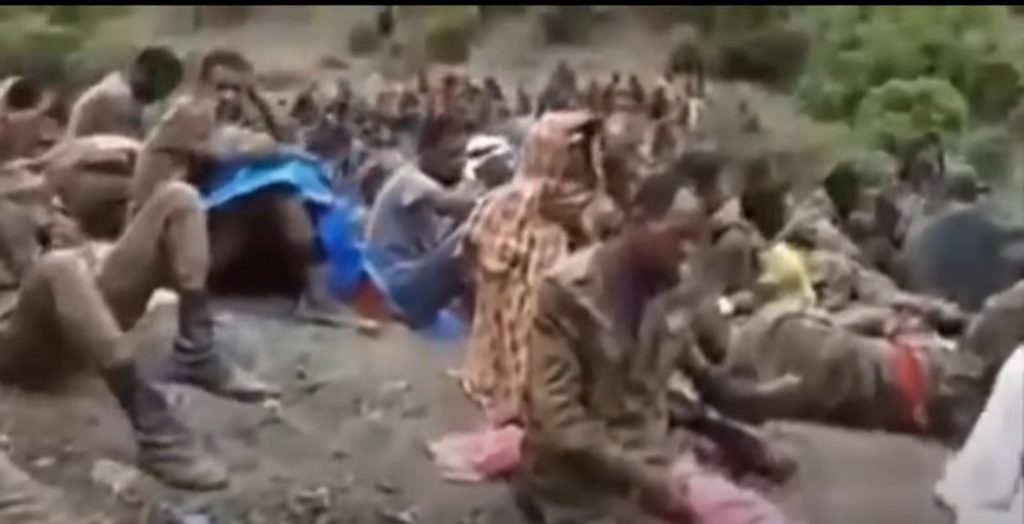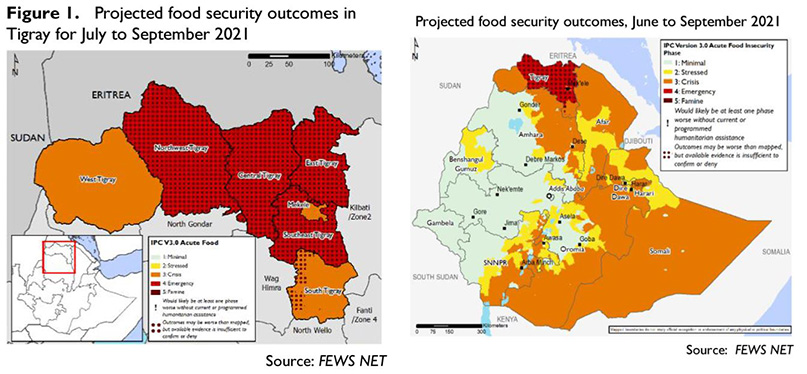For Ethiopians previously not affected by the Ethiopian Tigray conflict it is now time to come to reality. Now is the time for all to realistically assess where to go from here. It is a time for prayer and contemplation. Ethiopians not affected by the war so far need to realize they soon will be.
Wars always start too early and end too late. Having fantasy notions about a coming Ethiopian miracle will only cause more misery. Whatever becomes of Ethiopia is going to happen regardless of what further futile military action is done by Ethiopia.

One in four people in all of Ethiopia are approaching a state of famine and for Tigray that is approaching 500,000. Ethiopian Airlines and mining interests are so disrupted by the war that the economy of Ethiopia is falling fast. Abnormal rain patterns as well as war now occurring in Tigray, Amhara, Afar, Oromia, Beningshugal, Somali, and the SNNPNR will surely reduce the major harvest this year. Inflation for the year is approaching 50% and the birr may reach 75 to the US dollar very soon.
Meanwhile, the Prime Minister has left to meet Isaias in Eritrea and then on to Turkey. It may happen that the Bole Airport may be overtaken by Oromia Liberation Army forces before he makes it back if he really intends to comeback. So far Prime Minister Abiy Ahmed has refused to negotiate but instead promising a massive counterattack which has never materialized. The Tigray and their allies have at least offered to negotiate.
At this point it is clear by many military and strategic analysts that Ethiopia cannot mount a significant counterattack to defeat Tigray. Now the Tigray Defense Force is being joined by fighters of liberation armies from Agew, Afar, Somali, Beningshugal, Oromia, and Gambella.
The Tigray Defense Force and their allies are driven by a need to free their people from perceived tyranny and abuse from Amhara elitism. The Amhara elites and their allies claim they want to preserve a chance for a unified Ethiopia that will become a more modern state. Unfortunately they cannot force their point of view upon others. As I and others have stated previously Ethiopian has always been an empire of subjugated nations. The prejudiced view of a united state of Ethiopia quickly fades from view as soon as you leave Addis for the countryside.
Thousands of Ethiopians are displaced now. Dessie Hospital and others in Amhara are overwhelmed with casualties. Most of the fighting equipment of the Ethiopian national defense force has been destroyed or taken by the Tigray Defense Force. Supply lines to both Tigray and Amhara as well as from Djibouti and Kenya are cut off. It may be just hours to days before the Bole Airport is closed. As of now no Ethiopian airline flight is flying domestically. Civilian traffic between major cities is severely restricted. The isolated and tormented people of Western Tigray will soon be freed.
A prayer from His Eminence Archbishop Abba Kewestos Ethiopian Orthodox Patriarchate:
In the name of the Father and of the Son
And of the Holy Spirit one God, Amen.
For he that will love life, and see good days, let him refrain his tongue from evil, and his lips that they speak no guile:
Let him eschew evil, and do good; let him seek peace, and ensue it.
For the eyes of the Lord are over the righteous, and his ears are open unto their prayers: but the face of the Lord is against them that do evil.
And who is he that will harm you if you will be followers of that which is good?
But if ye suffer for righteousness’ sake, happy are ye: and be not afraid of their terror, neither be troubled;
But sanctify the Lord God in your hearts: and be ready always to an answer to every man that asketh you a reason of the hope that is in you, with meakness and fear;
Amen.



